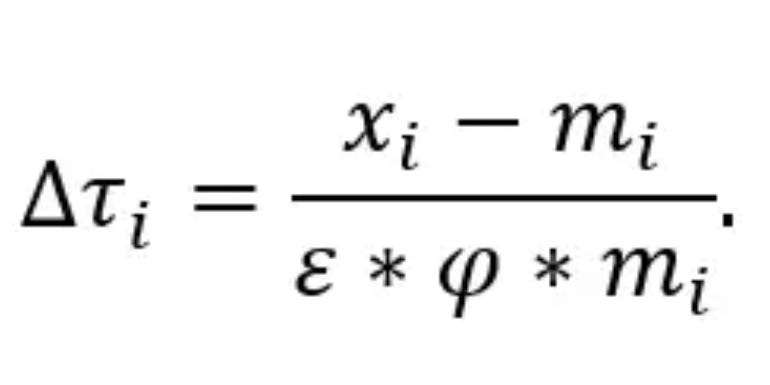
Try our newest merchandise
It seems a fairly easy formulation was used to calculate President Donald Trump’s “Liberation Day” tariffs.
The levies on imported items into the US range broadly between nations, starting from 10% to 50%.
The formulation used — which prompted derision from some as soon as revealed by the US Commerce Consultant — includes dividing a rustic or territory’s commerce surplus with the US by the worth of its exports to the US. Then, the ensuing determine was divided by two, to make the tariff fee.
Workplace of the USA Commerce Consultant
The method has led to some eyebrow-raising charges. The French territory Saint Pierre and Miquelon, which has a inhabitants of round 5,000 folks, has a 50% tariff.
Information from the US Census Bureau exhibits that $3.4 million of products have been imported from the islands to the US in 2024, whereas Saint Pierre and Miquelon imported $100,000 from the US that yr in order that commerce imbalance was used to calculate the tariff fee.
In a press release revealed on Wednesday evening, the US Commerce Consultant mentioned the tariffs have been “calculated because the tariff fee essential to steadiness bilateral commerce deficits between the US and every of our buying and selling companions.”
Quite a few nations, just like the UK, Singapore, and Brazil, have been hit with the bottom fee of 10% tariff. Israel, which scrapped all tariffs on American items, was hit with a 17% levy.
Vietnam, a key competitor to China, is topic to a 46% tariff.
“If commerce deficits are persistent due to tariff and non-tariff insurance policies and fundamentals, then the tariff fee in keeping with offsetting these insurance policies and fundamentals is reciprocal and honest,” the US Commerce Consultant mentioned.
Gary Hershorn/Getty Photographs
Here is what economists needed to say
Economists have been fast to weigh in on the revelation of precisely how the Trump administration calculated the tariffs.
“The tariff calculation method arguably makes for a extra free-wheeling and open-ended nature to potential commerce negotiations in coming months,” George Saravelos, head of FX analysis at Deutsche Financial institution, mentioned in a observe.
“It appears there are not any particular and identifiable coverage asks per se however finally a want to cut back bilateral commerce imbalances,” he added.
Others shared pointed criticism of the method.
Nouriel Roubini, professor emeritus on the NYU Stern Faculty of Enterprise, wrote in a submit on X that the formulation used is “completely flawed” as a result of it assumes {that a} honest commerce steadiness needs to be equal to zero.
“By that normal because the US runs a commerce surplus in companies different nations ought to impose a big companies reciprocal tariffs towards the US to steadiness that commerce too!” Roubini mentioned.
Peter Schiff, chief economist and world strategist at Euro Pacific Asset Administration, mentioned in a submit on X that the tariffs are primarily based on “a bogus formulation that attributes any nation’s commerce surplus to tariffs, even when tariffs are low or nonexistent.”
“Operating bilateral commerce surplus/deficits with completely different nations is the way in which it ought to be,” Olivier Blanchard, Robert M. Solow professor of economics emeritus at MIT, wrote in an X submit. “Attempting to remove each is solely silly.”
“I’ve a commerce deficit with my grocer, a commerce surplus with my employer. I’m not positive it might be an excellent concept for me to work for my grocer,” he mentioned.






![[2024] MSI Aegis R2 C14NUF9-829US (Intel Core i9-14900F, 128GB DDR5 RAM, 2X 2TB NVMe SSD, NVIDIA GeForce RTX 4070 Ti Super, Windows 11) Gaming Desktop PC](https://m.media-amazon.com/images/I/81i1KVslX4L._AC_SL1500_.jpg)







